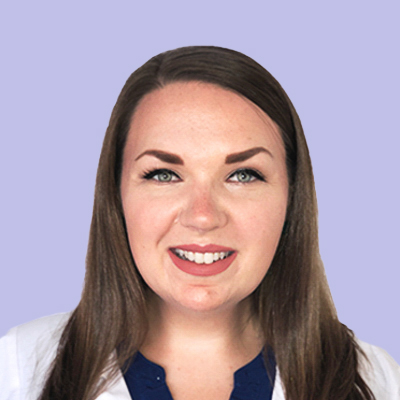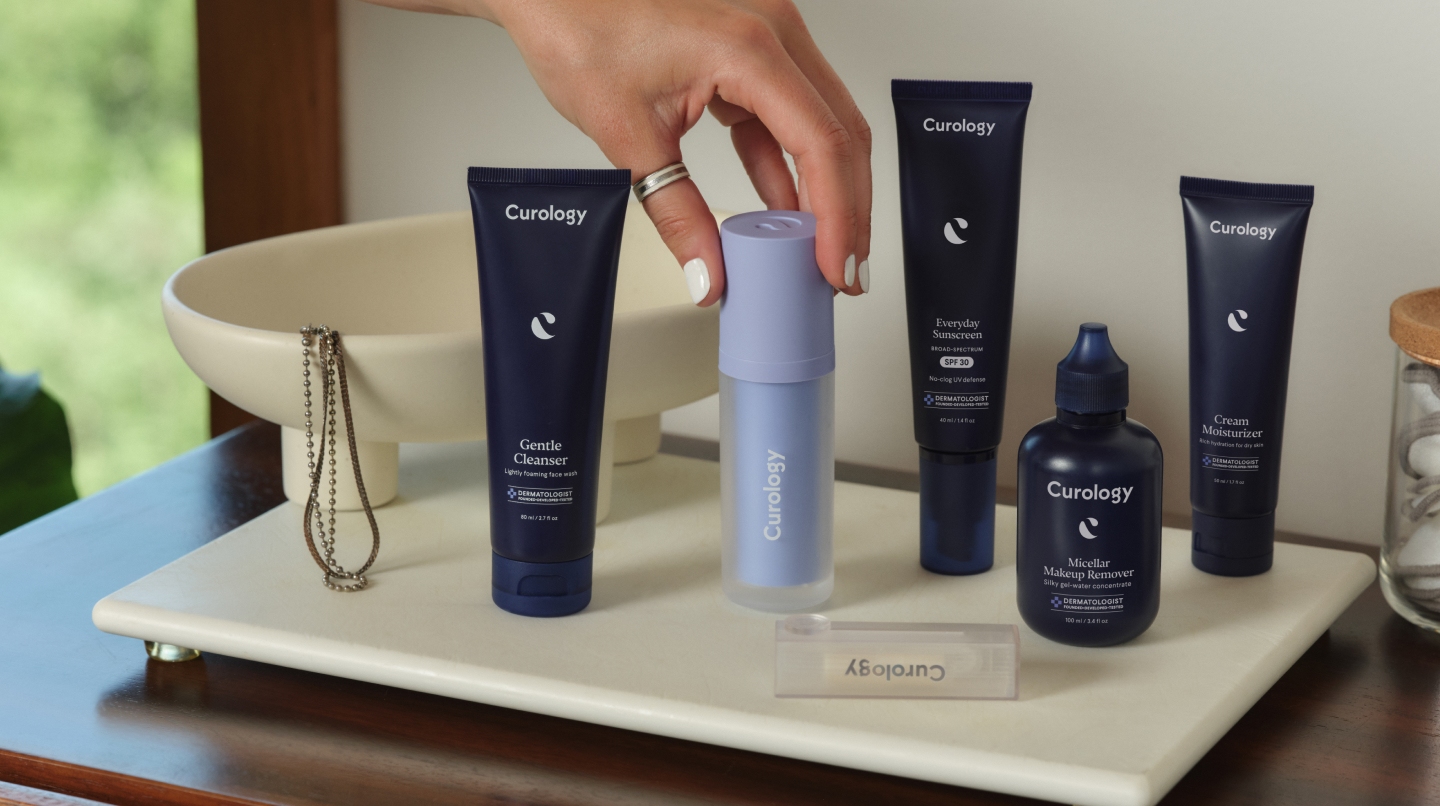How it works:
Share your skin goals and snap selfies
Your dermatology provider prescribes your formula
Apply nightly for happy, healthy skin
How it works:
How it works:
Share your skin goals and snap selfies
Your dermatology provider prescribes your formula
Apply nightly for happy, healthy skin
How it works:
Pimples vs. zits: What makes them different and how to treat them
Say goodbye to pesky pimples and learn how to zap those zits.



Everyone has skin issues every now and then, but a pimple that overstays its welcome can be especially frustrating. But have you ever wondered, “Is there a difference between a zit and a pimple?” or, “Are pimples and zits the same thing?” Spoiler alert: They’re one in the same!
Still, many different types of pimples and zits exist, and it’s pretty easy to confuse one for the other. And that goes for any type of blemish, really. But knowing how to identify the type or types of blemishes you’re experiencing is the first step in learning how to treat existing breakouts and help prevent new ones from popping up. So, let’s break it down.
Pimple vs. zits
In short, “zit” is just another word for a pimple, which starts to form when excess oil and dead skin cells clog a hair follicle.¹ When you think of pimples, what first comes to mind are most likely small red bumps on your face or other parts of your body. But the truth is, there are several different types of pimples you may experience, and many people experience multiple types simultaneously (a condition known as acne vulgaris). Among the roster of common pimples are papules, pustules, nodules, and cysts.²
Contributing factors for pimples and zits
If you’re wondering “why am I breaking out in zits,” know this: You’re certainly not alone. Unfortunately, there isn't one sole cause for blemishes; instead, there are multiple factors that can lead to breakouts. Some of the most common include:
Hormones. Fluctuations in hormones, especially androgens, can cause glands in your skin to release more natural oil (called sebum), which collects in the pores and can contribute to acne.³
Genetics. If you have a family history of acne, you may be more prone to developing some pimples.⁴
Stress. Stress doesn’t necessarily cause acne, but it can make it worse.⁵ So if you notice a pimple pop up when you’re studying for a big exam or prepping for an interview, the extra stress might be to blame.
Diet. Your diet may affect your skin, but that doesn’t mean you necessarily need to change everything you eat; further studies are needed to explore the topic.⁶
How to help get rid of zits and pimples
There are many potential factors that can contribute to and worsen your breakouts, but the good news is there are also many treatment options that can help reduce zits. Depending on the type of acne you experience and what specific acne lesions you have, what works best for your skin may vary.
Over-the-counter topical acne treatments
If you’re experiencing mild acne that’s really nothing more than a few pimples here and there, non-prescription topical treatments can be very effective in helping to lessen the severity of your blemishes.
Salicylic acid. Salicylic acid can help reduce pimples for mild to moderate acne.⁷
Benzoyl peroxide. Benzoyl peroxide fights against the bacteria that can contribute to acne,⁸ making it a great ingredient to look for in face cleansers and spot treatments to help with pimples that look inflamed.
Topical zinc. Zinc has antimicrobial activity against bacteria and fungus that contribute to acne. It also may suppress sebum (oil) from the sebaceous glands.⁹ You can find zinc pyrithione in certain Curology formulas!
Azelaic acid. Azelaic acid unclogs pores while fighting both the bacteria and fungus that can contribute to pimples. It also has anti-inflammatory properties.¹⁰ You can find azelaic acid in certain Curology formulas!
Prescription topical treatments
If your pimples are more persistent, a medical provider may prescribe an acne treatment that involves stronger active ingredients like:
Retinoids. Prescription retinoids are effective for treating both inflammatory and non-inflammatory pimples. They do come with potential side effects; dryness and irritation are the most common.¹¹ Tretinoin, a topical retinoid, is available in some Curology formulas!
Topical antibiotics. Antibiotic creams like clindamycin can also help clear up more persistent acne.¹²
For severe acne, medical providers often prescribe a combination of topical treatments and oral medications. Make sure to consult with a medical professional about your treatment options to get personalized advice for your unique skin.
How to help prevent pimples and zits
Sometimes the best treatment method is prevention. Luckily, there are many steps you can take that may help prevent pimples.
Be consistent. Dr. Julie Akiko Gladsjo, a board-certified dermatologist at Curology says, “If you’re changing your skincare routine every week, you’re not giving your products enough time to work. With your skin, patience is key; it can take four weeks or longer to notice improvements in your skin.”
Wash your face. Regularly washing your face twice a day or after sweating can help keep your pores from getting clogged and avoid oil buildup.
Apply acne medication to your whole face. “Don’t just use acne medication on specific blemishes; spread it everywhere you experience pimples to help prevent breakouts”, says Dr. Gladsjo.
Keep your pores unclogged. Beauty products that contain comedogenic ingredients can lead to clogged pores, which can then cause larger inflamed pimples. Take care to choose non-comedogenic products instead.
Pimple or zit, don’t pop it
We know it can be tempting to try to squeeze your pimples out of existence, but take it from us: There are better ways to fight your acne than popping or picking at it. When you pop a zit, you run the risk of making it worse and potentially more persistent by pushing some of the sebum, skin cells, and bacteria deeper into your skin.¹³ You can also cause it to become more inflamed, make it more noticeable, and risk scarring. It might be hard to keep your hands away, but trust us—it’s not worth the momentary satisfaction of pimple-popping.
Get your personalized skincare routine with Curology
Get your personalized skincare routine with Curology


Treating your pimples with Curology is simple and stress-free. If all the possible causes, treatment options, and ways to prevent breakouts seem like too much information to know what exactly you should do, Curology offers personalized, dermatology-backed skincare solutions for your unique skin. Doing your own research (like you are now) is always important, but the medical professionals at Curology can help you take the mystery out of your skincare.
Sign up for a free trial and get your 30-day supply of our Custom Formula, plus any of our recommended products—just pay $4.95 (plus tax)* to cover shipping and handling.
P.S. We did the research so you don’t have to
1. Mayo Clinic Staff. Acne:Symptoms and Causes. (2020, September 12).
2. Cleveland Clinic. Acne. (2020, September 1).
3. Elsaie M. L. Hormonal treatment of acne vulgaris: an update. Clinical, cosmetic and investigational dermatology. (2016, September 2).
4. Zaenglein, A. L., et al. Guidelines of care for the management of acne vulgaris. Journal of the American Academy of Dermatology. (2016).
5. Cleveland Clinic. Acne. Ibid.
6. Di Landro A, et al. Family history, body mass index, selected dietary factors, menstrual history, and risk of moderate to severe acne in adolescents and young adults. J Am Acad Dermatol. (2012 December 1).
7. Jacqueline Woodruff, et al. A double-blind, placebo-controlled evaluation of a 2% salicylic acid cleanser for improvement of acne vulgaris.(2013, April 1).
8. Zaenglein, A. L., et al. Guidelines of care for the management of acne vulgaris. Ibid.
9. Gupta, M., et al. Zinc therapy in dermatology: a review. Dermatology research and practice. (2014).
10. Zaenglein, A. L., et al. Guidelines of care for the management of acne vulgaris. Ibid.
11. Leyden, J., et al. Why Topical Retinoids Are Mainstay of Therapy for Acne. Dermatology and therapy, (September 2017).
12. Kraft, J., & Freiman, A. Management of acne. CMAJ: Canadian Medical Association journal.( 2011, April 19).
13. American Academy of Dermatology. Pimple Popping: Why only a dermatologist should do it. (n.d.).
*Subject to consultation. Results may vary. Cancel anytime.
We’re here to tell you what we know. That’s why our information is evidence-based and fact-checked by medical experts. Still, everyone’s skin is unique—the best way to get advice is to talk to your healthcare provider.

Curology Team

Donna McIntyre, NP-BC
Related Articles
How to remove makeup without makeup remover wipesThe complete guide to face cleansers for every skin typeDoes dermaplaning cause acne? Experts explainThe 6 best chemical exfoliators for glowing skinNavigating the world of oil-free moisturizers: Our top 4 picksPopular Articles
Ask Curology: Is my cold breaking me out?Slugging: The dermatologist-approved skincare hack going viral on TikTokTretinoin vs retinol: What’s the difference?How to create a self-care routine that actually sticksYour 2023 skincare horoscopeTry prescription skincare
Get routine essentials

Good skin days ahead
- Breakouts
- Redness
- Fine lines
- Dark spots
- Hair thinning